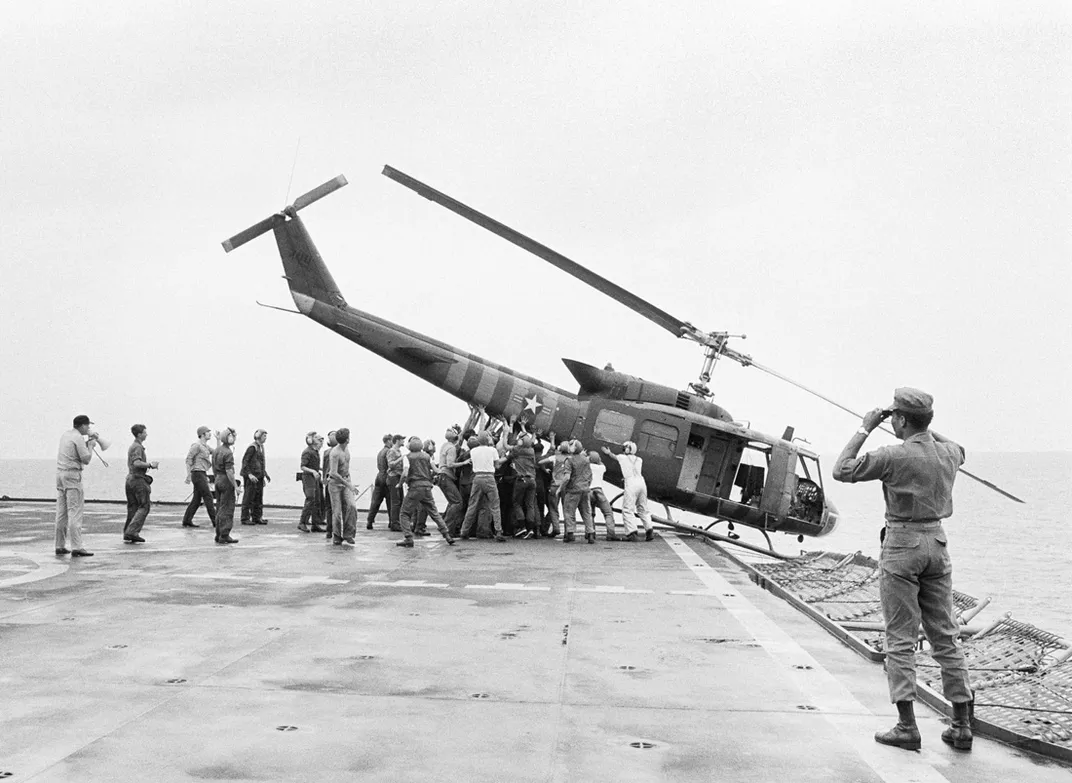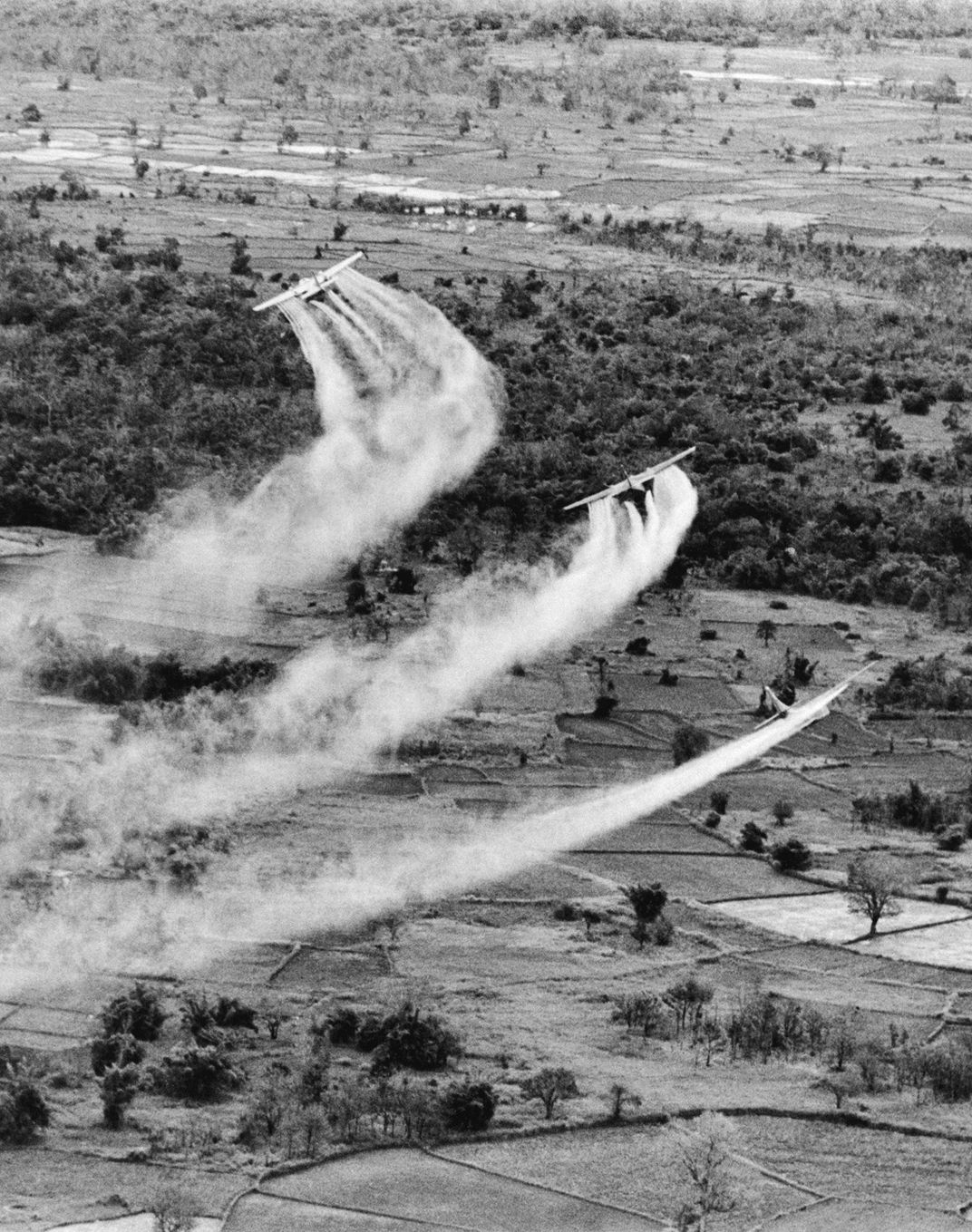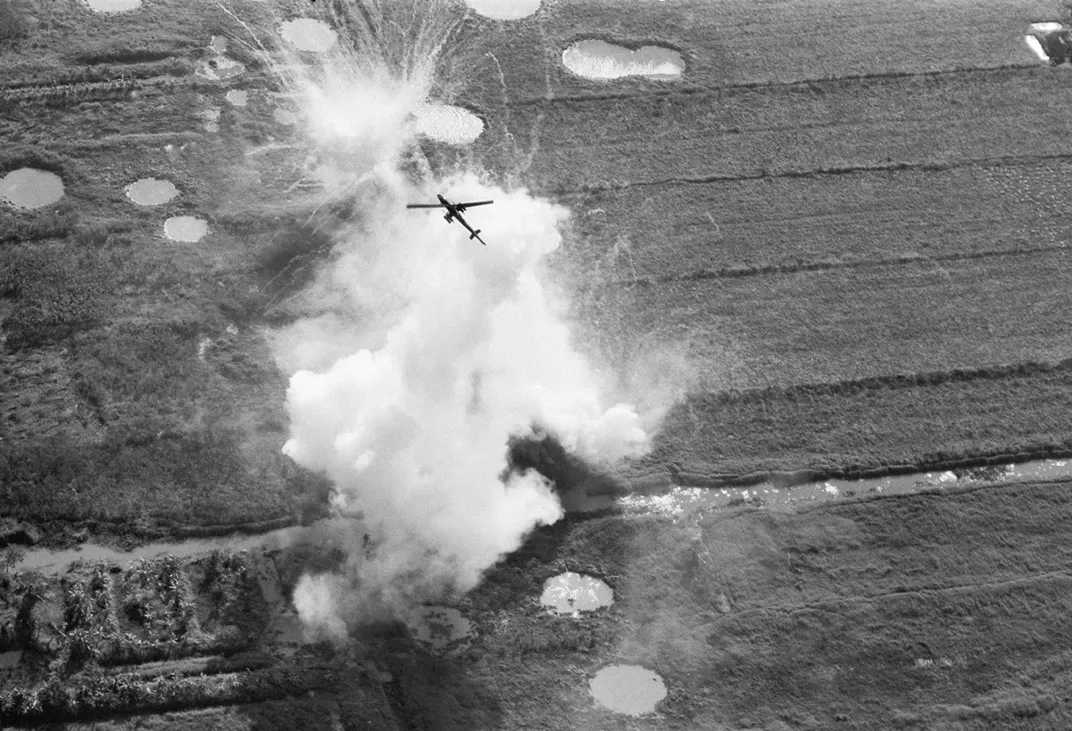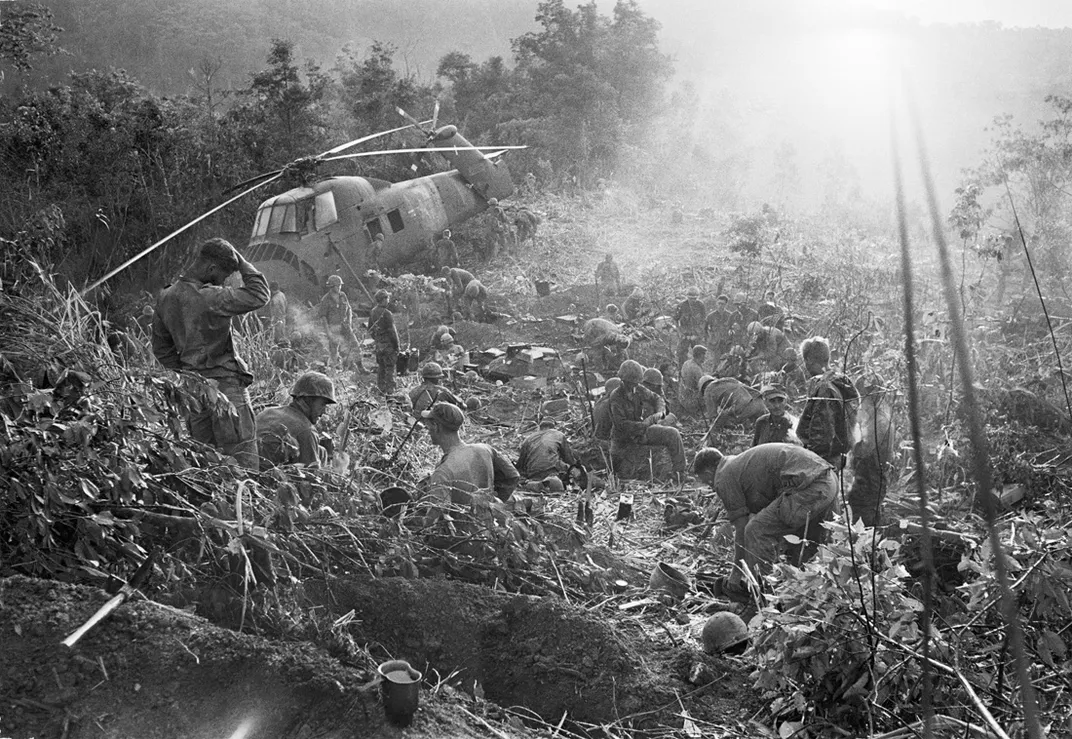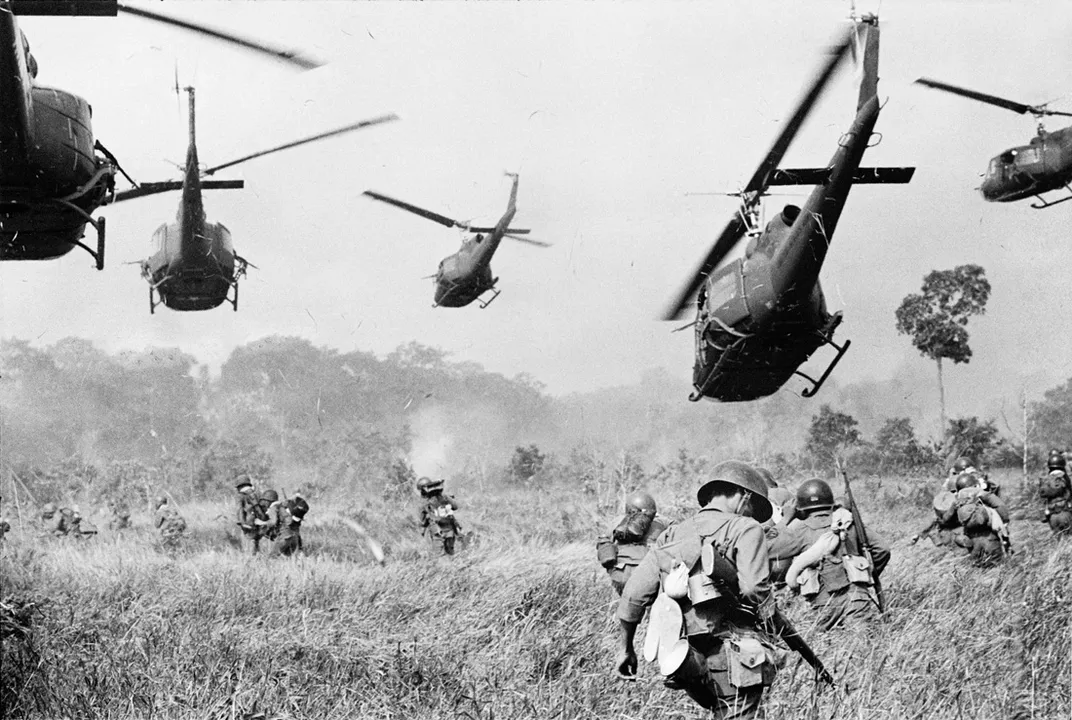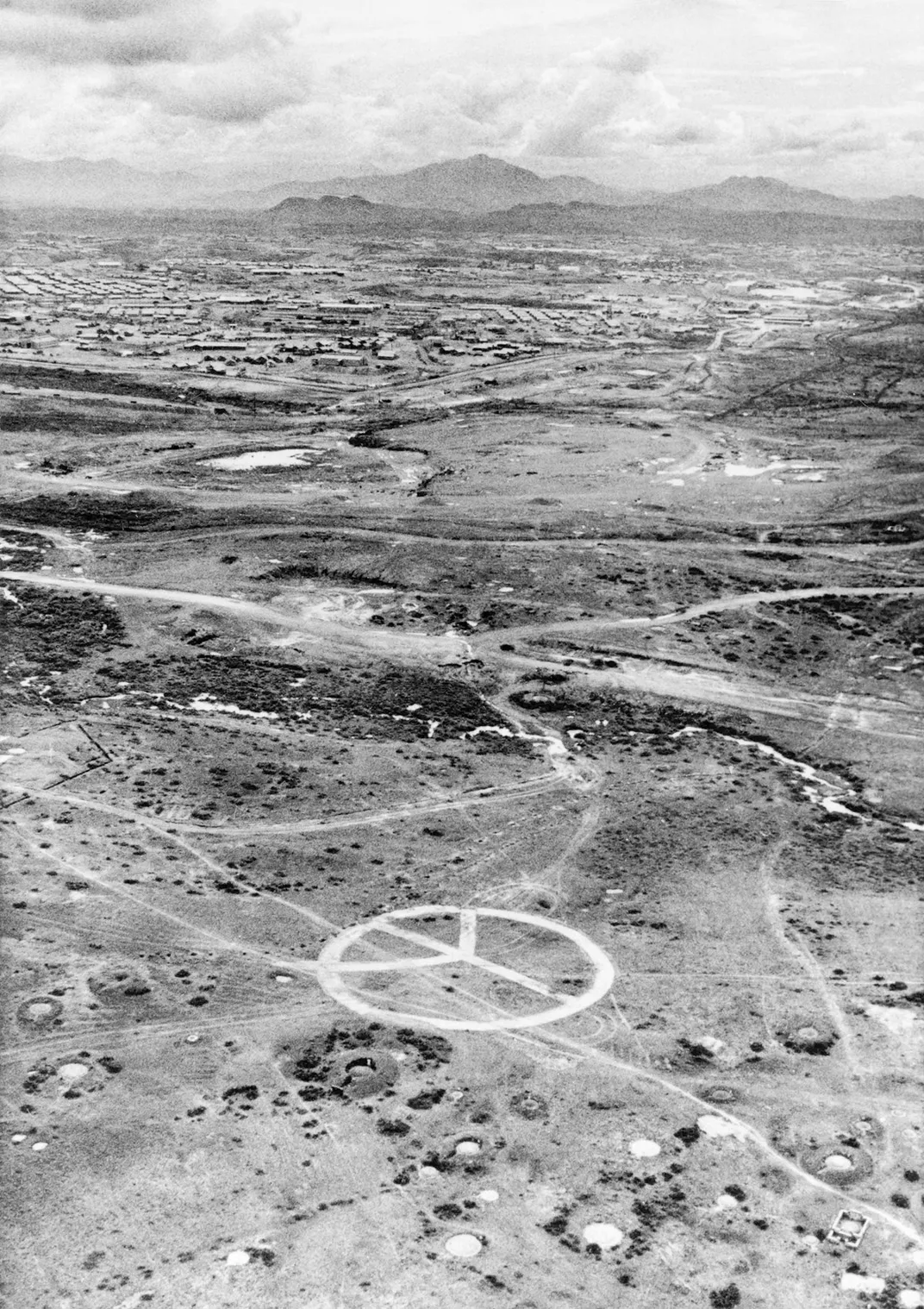Vietnam: A Photographic History
Unforgettable images from the AP photographers who covered the war in Southeast Asia.
“The Associated Press had more reporters, photographers, stringers, and translators than any other news organization in Vietnam,” writes Pete Hamill in his introduction to Vietnam: The Real War (Abrams, 2013). “As a media story, most reporters agreed then (and now) that the Associated Press owned Vietnam. Before the war was over, AP journalists would win six Pulitzer Prizes, journalism’s highest honor. Four would be for photographs displayed in this book.”
The book’s editors mark December 11, 1961 as the beginning of U.S. involvement in the war.
On that day, the aviation transport carrier USNS Core arrived in Saigon, delivering 33 helicopters along with 400 air and ground crewmen to operate and maintain them in support of the ARVN. These H-21C helicopters, known as ‘flying bananas,’ were assigned to quickly airlift South Vietnamese troops into combat, and the surprise element in this new air mobility would set the Viet Cong back for a year or more until the guerrillas learned to adapt.
On November 1, 1964, the Viet Cong shelled the airfield at Bien Hoa Air Base, 12 miles north of Saigon, with mortars. Four Americans were killed, 76 wounded, and 20 aircraft destroyed. It showed the guerrillas that they could disrupt U.S. air operations with direct attacks on bases—and there would be more than 400 such attacks before the war ended.
By 1966, the United States stepped up its air attacks. April saw the first use of B-52 bombers against North Vietnam. In June, oil depots were targeted around Hanoi and Haiphong. And in July, for the first time, the U.S. military bombed NVA troops in the DMZ, the buffer area separating North and South Vietnam.
On November 1, 1968, [President] Johnson ordered a complete bombing halt in return for Hanoi accepting South Vietnam as a partner in the peace talks. During a period of three years, eight months, and 24 days, American pilots had flown 100,000 missions and unloaded almost a half-million tons of bombs across North Vietnam. More than 900 American planes had been lost and nearly 1,500 airmen killed, captured, or listed as missing in action.
Despite [President] Nixon’s pledge [to gradually withdraw troops from Vietnam], U.S. troop strength actually increased in the early months of 1969, hitting an all-time high of 543,482 at the end of April. Meanwhile, in March, Nixon gave the go-ahead to Operation Breakfast, the start of a secret bombing campaign inside neighboring Cambodia that would continue for 14 months.
The Paris peace talks broke off in March 1972, and the North Vietnamese opened what was called the Easter Offensive. In response, the U.S. military resumed bombing North Vietnam, sending B-52s to attack supply dumps and petroleum storage sites in and around Hanoi and Haiphong. This campaign, known as Operation Linebacker, was carried out from May to October and marked the first continuous bombing since [President] Johnson suspended it in November 1968. Nixon also ordered the mining of Haiphong Harbor. These U.S. moves succeeded in stopping the North Vietnamese offensive and brought Hanoi back to the negotiating table in Paris. When talks broke down again, Nixon forced the issue by launching an even more aggressive bombing operation, known as Linebacker II or the ‘Christmas bombing.’ This operation, from December 18 to 29, saw the largest heavy bomber strikes by the Air Force since World War II.
The Paris Peace Accords were signed on January 27, 1973. For the war as a whole, the Department of Defense lists U.S. fatalities at 58,220.
Scroll through the gallery, above, to see additional images from the book.
Text and images are from Vietnam: The Real War, and are used by permission of the publisher.
